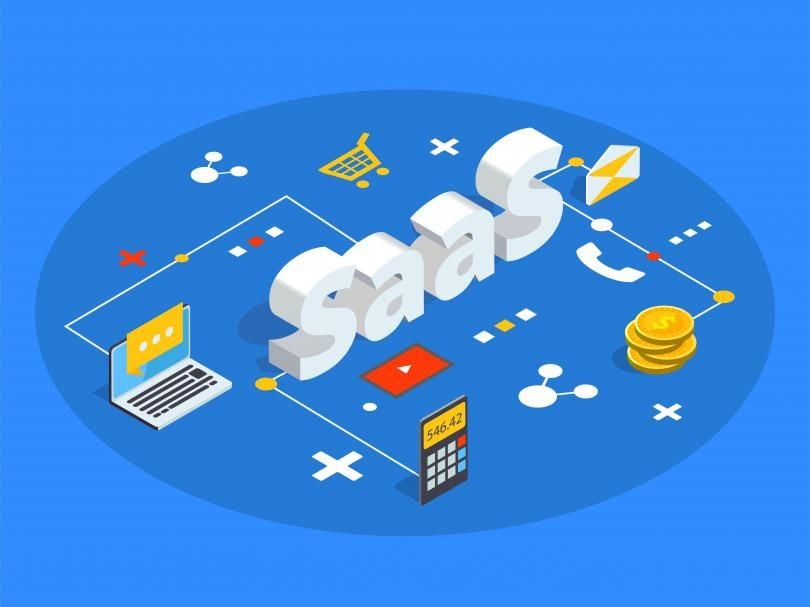In this dynamic environment, staying ahead of the competition demands more than just an exceptional product — it demands data-driven decision-making. For this, understanding the vital metrics that underpin the success of your SaaS venture is not just an advantage — it’s an absolute necessity. Here are the top 10 SaaS metrics that will not only empower you with actionable insights but also reshape the trajectory of your SaaS venture, ensuring unparalleled growth and success in this fast-paced digital era.
What are SaaS metrics?
SaaS metrics are specific key performance indicators (KPIs) that provide valuable insights into various aspects of your SaaS product and its customer base. These metrics are crucial in evaluating the health of your business, identifying strengths and weaknesses, and making data-driven decisions to drive sustainable growth.
Top 10 Must Know SaaS Metrics
1) Monthly Recurring Revenue (MRR)
MRR represents the predictable and recurring revenue generated from active subscriptions on a monthly basis. It is a crucial metric for tracking revenue stability and growth. To calculate Monthly Recurring Revenue (MRR) for a SaaS product, follow these steps:
- Identify Subscription Plans: Determine the different subscription plans offered by your SaaS product. This could include various tiers or packages with different features, pricing, and billing cycles.
- Count Active Subscribers: For each subscription plan, count the number of active subscribers during a specific period, typically a month. Active subscribers are customers who are actively using the service and have not canceled or churned.
- Calculate Monthly Revenue per Plan: Multiply the number of active subscribers for each plan by the corresponding monthly subscription fee. This will give you the monthly revenue generated from each plan.
- Sum the Monthly Revenues: Add up the monthly revenues from all subscription plans to get the total Monthly Recurring Revenue (MRR) for the given period.
2) Churn Rate
Churn rate measures the percentage of customers who cancel or unsubscribe from your service within a specific time period. A high churn rate can indicate dissatisfaction or retention issues. To calculate the Churn Rate for a SaaS product, follow these steps:

- Define the Time Period: Determine the specific time period for which you want to calculate the churn rate. This could be a month, quarter, or any other defined interval.
- Count Customers at the Start: At the beginning of the chosen time period, count the number of active customers or subscribers.
- Count Customers Lost: Identify the customers who have churned or canceled their subscriptions during the selected time period.
- Calculate Churn Rate: Divide the number of customers lost during the chosen time period by the number of customers at the start of the period, then multiply by 100 to express the churn rate as a percentage.
3) Customer Acquisition Cost (CAC)
CAC calculates the average cost of acquiring a new customer. Understanding CAC helps product owners evaluate the effectiveness of their marketing and sales efforts. To calculate Customer Acquisition Cost for a SaaS product, follow these steps:

- Identify Marketing and Sales Expenses: Gather all the expenses associated with marketing and sales efforts aimed at acquiring new customers. This includes costs related to advertising, content creation, social media campaigns, events, sales team salaries, commissions, and any other relevant expenses.
- Define the Time Period: Determine the specific time period for which you want to calculate CAC. Common time periods used are monthly or annually.
- Count New Customers: Count the number of new customers acquired during the chosen time period.
- Calculate Customer Acquisition Cost: Divide the total marketing and sales expenses by the number of new customers acquired during the selected time period.
4) Customer Lifetime Value (CLV)
CLV estimates the total revenue a customer is expected to generate during their entire relationship with your company. It helps prioritize customer retention and identify valuable customer segments. To calculate Customer Lifetime Value for a SaaS product, follow these steps:

- Identify the Time Period: Determine the specific time period you want to analyze for CLV calculation. This could be monthly, annually, or the average duration of customer relationships.
- Calculate Average Revenue per Customer: Sum up the total revenue generated from a specific customer segment during the chosen time period, then divide it by the total number of customers in that segment.
- Calculate Average Customer Lifespan: Determine the average length of time a customer stays subscribed or engaged with your SaaS product. This is typically calculated by tracking the customer tenure and calculating the average.
- Calculate Customer Lifetime Value: Multiply the Average Revenue per Customer by the Average Customer Lifespan.
5) Average Revenue Per User (ARPU)
ARPU measures the average revenue generated per individual customer. Monitoring ARPU can help product owners identify upsell or cross-sell opportunities. To calculate Average Revenue Per User (ARPU) for a SaaS product, follow these steps:
- Identify the Time Period: Determine the specific time period for which you want to calculate ARPU. This could be monthly, quarterly, or annually.
- Calculate Total Revenue: Sum up the total revenue generated by the SaaS product during the chosen time period.
- Count the Active Users: Count the number of active users or customers who used the SaaS product during the selected time period. Active users are those who have engaged with the product and may include both paying customers and free trial users.
- Calculate Average Revenue Per User: Divide the total revenue by the number of active users.
6) Customer Engagement Metrics
These include metrics like Daily Active Users (DAU) and Monthly Active Users (MAU), which gauge how often customers use your product. Engaged users are more likely to convert and stay loyal. To track Customer Engagement Metrics for a SaaS product, consider the following KPIs and their technical details
7) Gross Margin
Gross margin calculates the difference between the revenue generated and the cost of goods sold. Understanding gross margins is crucial for assessing the profitability of your SaaS business. To calculate Gross Margin for a SaaS product, follow these steps:
Identify Total Revenue: Sum up all the revenue generated by the SaaS product during a specific time period. This includes revenue from subscription fees, one-time purchases, or any other sources.
Determine Cost of Goods Sold (COGS): For a SaaS product, COGS mainly includes the expenses directly related to delivering the service, such as hosting costs, server expenses, licensing fees for third-party software, and customer support costs.
Calculate Gross Profit: Subtract the COGS from the Total Revenue to obtain the Gross Profit.
Calculate Gross Margin: Divide the Gross Profit by the Total Revenue and multiply by 100 to express the Gross Margin as a percentage.
READ ABOUT MORE METRICS HERE:
Essential SaaS Metrics: Top 10 Must-Knows for Product Owners!
Conclusion
Remember, it’s not just about having a remarkable product, but also about utilizing data to continuously improve and stay ahead of the competition. By monitoring these SaaS metrics, you can gain valuable insights into the health of your SaaS business, make informed decisions, and steer your company toward sustainable growth and profitability.
As you embark on this data-driven journey, we invite you to take your SaaS venture to new heights with our cutting-edge SaaS services. Don’t miss the chance to elevate your SaaS business to its full potential. Contact us today and let’s embark on this exciting journey together!


No comments yet